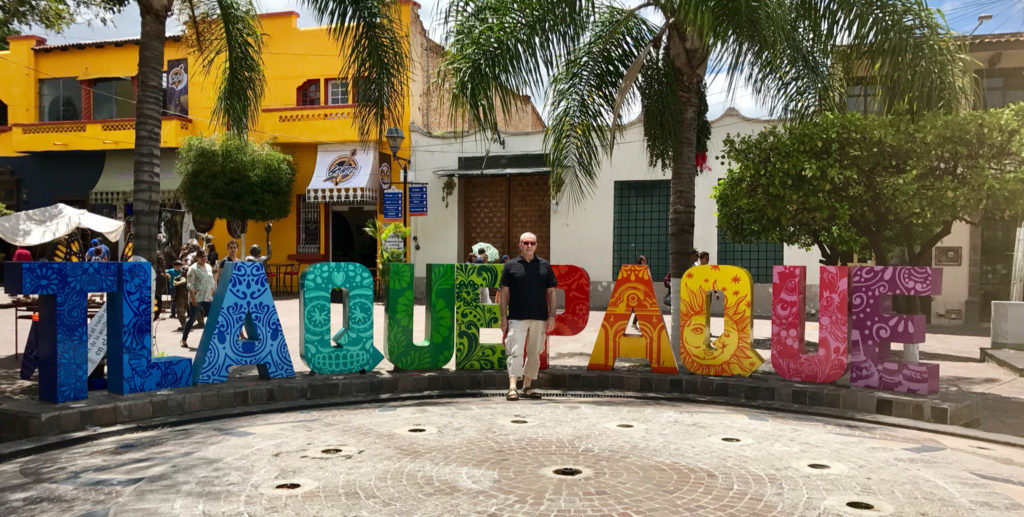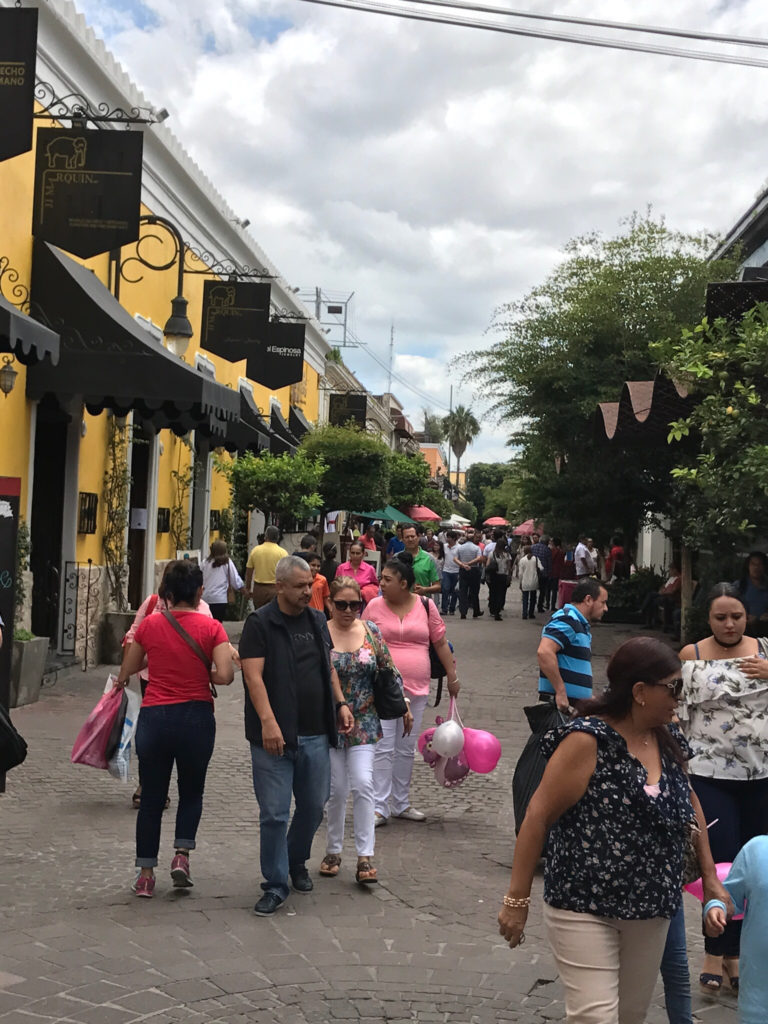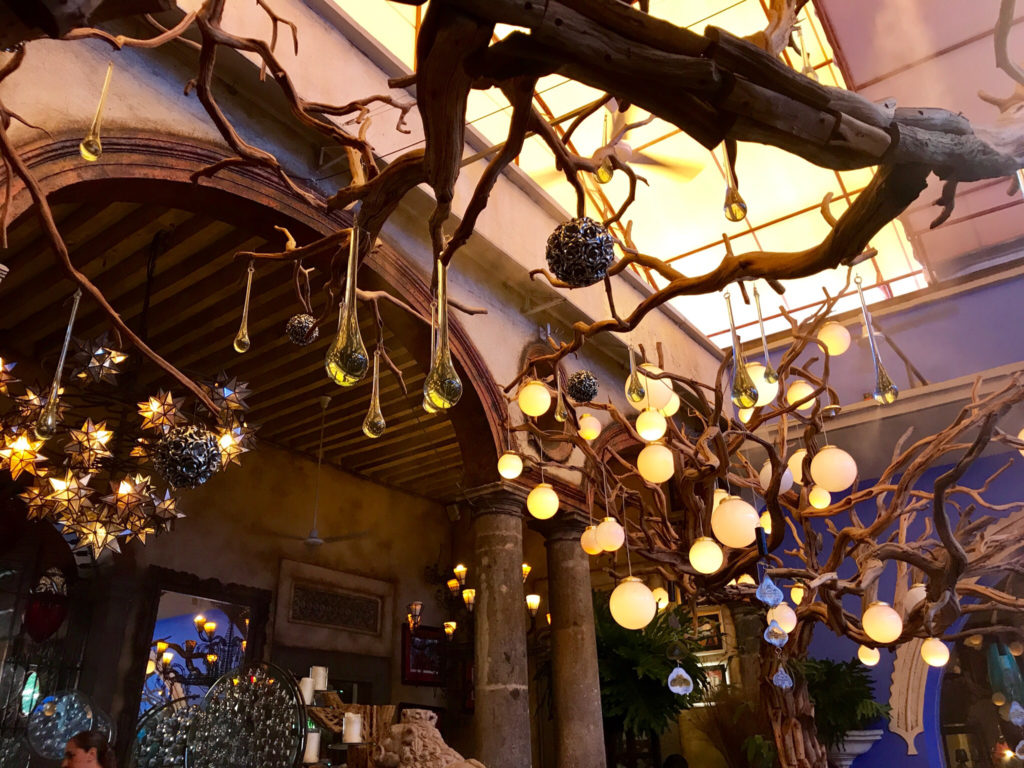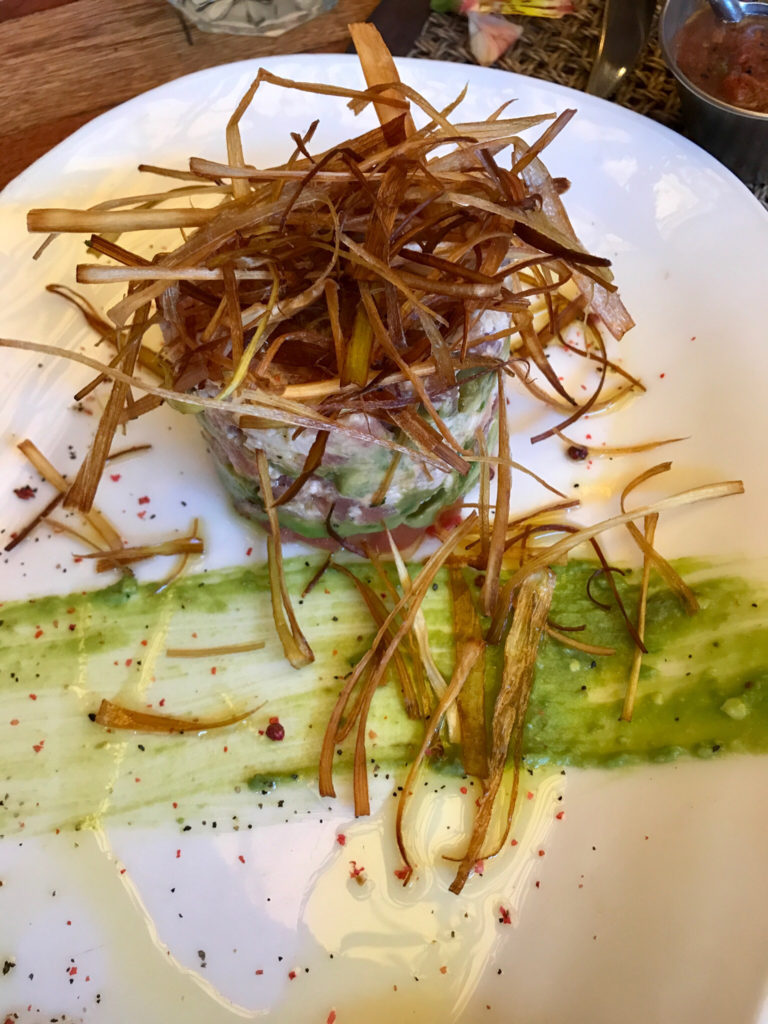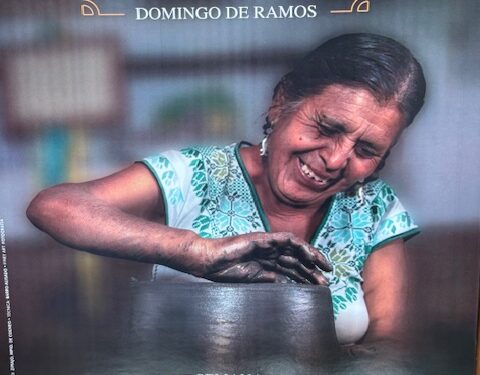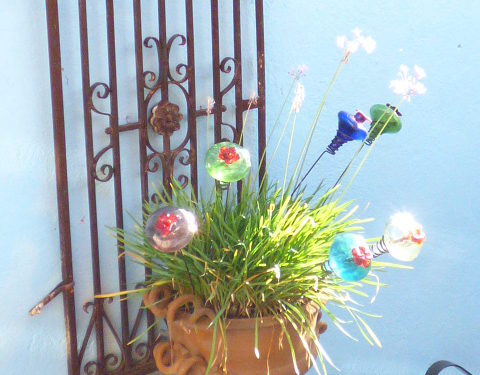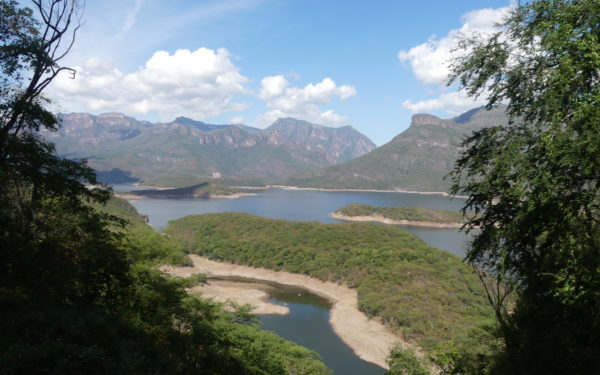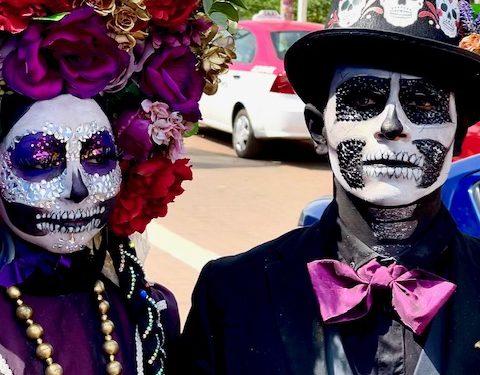Guadalajara – September 3rd, 2017
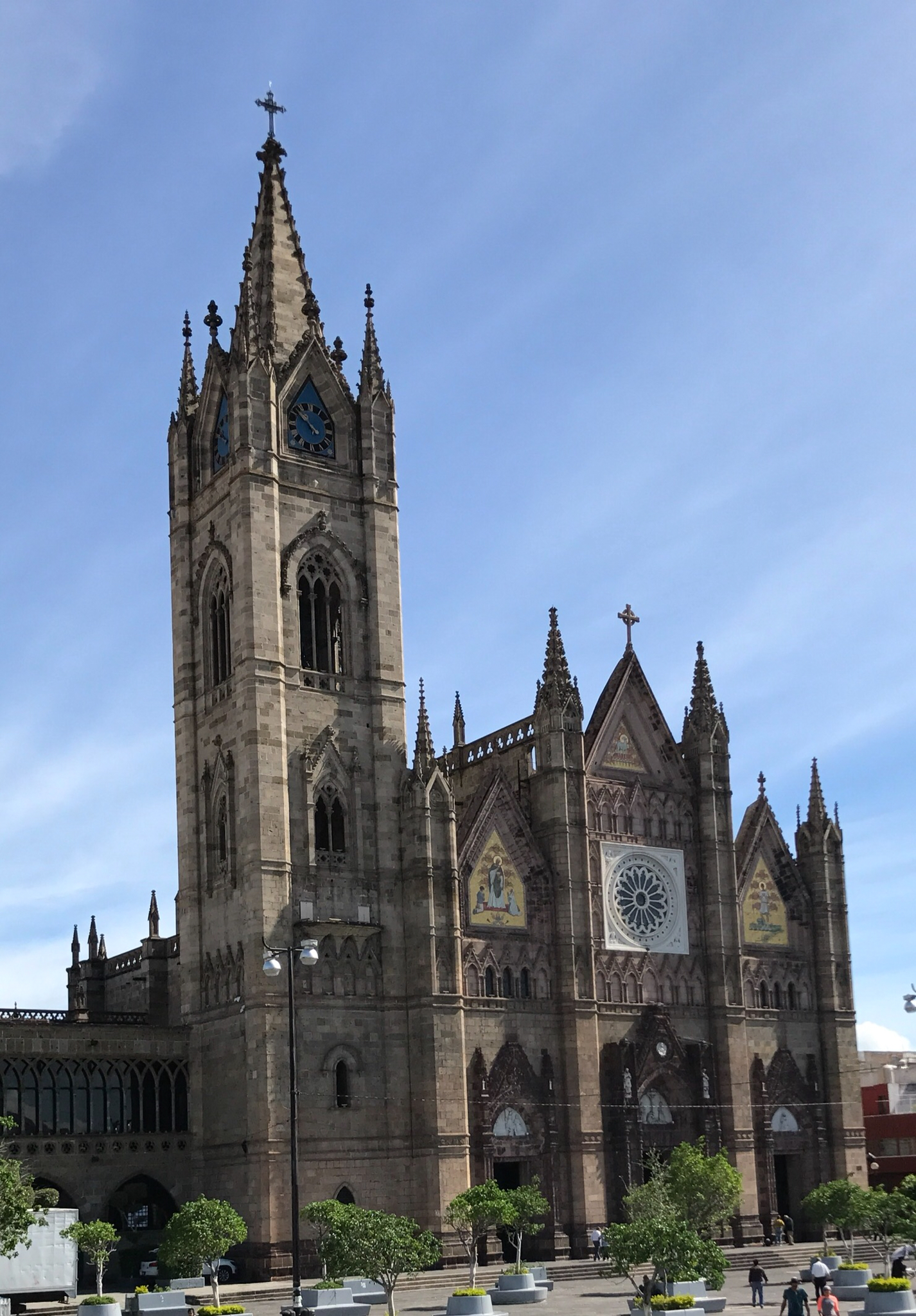
The wise shopper sees it in Tlaquepaque but buys it in Tonala.
Today we set off on our last day of exploring Guadalajara. We jumped on the hop on and off city tour bus, that stops 100 feet from the hotel………we were asked if we were “tercera edad” or seniors a quickly si and the bargain of the century a $6 all-day bus ticket.
The bus drove through beautiful neighbors and traffic rotundas filled with massive monuments.
We had to detour from the main boulevard into the city, since on Sundays it’s closed to regular traffic, instead it’s taken over by cyclists, skaters, kids on trikes, and big wheels.
Arrived in the historic district and transferred to the Tlaquepaque bus another ride through the city on an open air bus.
Tlaquepaque (Spanish pronunciation: [tlakeˈpake]), historically San Pedro Tlaquepaque, is a suburb of Guadalajara. During the 20th century, it was absorbed by the outward spread of the state capital and is now a fully integrated part of the Guadalajara conurbation, lying only a few kilometres from the city centre.
The name Tlaquepaque derives from Nahuatl and means “place above clay land”. The area is famous for its pottery and blown glass.
Tlaquepaque features El Parián, a large plaza flanked by columned arcades and surrounded by restaurants and bars. The main square in the city center is known as El Jardín Hidalgo (“Hidalgo Garden”), named after Miguel Hidalgo y Costilla, the “Father of Mexican Independence.” A larger-than-life statue of Hidalgo dominates the square. Other main features include the two important churches, El Santuario de Nuestra Señora de la Soledad (The Sanctuary of Our Lady of Solitude) and San Pedro (Saint Peter), and the Benito Juárez market.
Street after street is a collection of high-end artisanal shops and restaurants secluded in the patios of the great casonas of centuries ago.
We strolled its streets going in and out of shops, galleries and selecting our late lunch locale. We spotted a few items that found their way to our luggage.
Tlaquepaque is known for its mariachi bands. During the annual San Pedro festivities, El Jardín is filled with stalls and street-sellers. On the day of San Pedro itself, towering firework-festooned structures known as the Castillo (“castle”) and Toro (“bull”) are set alight.
After about 2 hours of rambling we hoped back on the bus to our next stop.
Tonalá (Spanish pronunciation: [tonaˈla]) is a city best known as a major handicrafts center for Jalisco, especially pottery, as well as a very large Thursday and Sunday street market, dedicated to handcrafts.
The “municipal palace” or local government building is distinguished by its clock tower and arches, which are decorated in ceramic tiles in traditional motifs. There are also ceramic murals created by Salvador Vázquez and Francisco Basulto.
The main church for the city is the Santiago Apostol Parish. Constructed in the 16th century, it is the second oldest standing church in the Valley of Atemajac. Capilla de la Cruz Blanca (White Cross Chapel) is where the first mass in western Mexico was said in 1530 by Franciscan monks.
Main cultural centers are the Museo Nacional de la Cerámica, the Casa de Artesanos and the Museo Tonallan. The Museo Nacional de la Cerámica is mostly dedicated to Jalisco ceramics, especially that of Tonalá.
Overlooking the town is the Cerro de la Reina (Queen’s Hill), named after the last indigenous ruler of Tonalá, Cihualpilli. At its summit, there is a monument to her, a chapel dedicated to the Virgin of Guadalupe, and a flagpole holding Jalisco’s highest Mexican flag, the sixth-highest in the country. The hill was originally the site for the queen’s home.
We arrived and it was Sunday markets, and if you guys remember my writing about Hong Kong or Vietnam David it’s not a particular fan of overcrowded sellers pushing their wares.
A quick walk passing shop after shop and stall after stall of the same ceramic items…..it was time to head back to Tlaquepaque but not before stopping for street roasted corn and churros filled with cajeta. David corn was sweeter than my churros, I was ready to walk back and get my own.
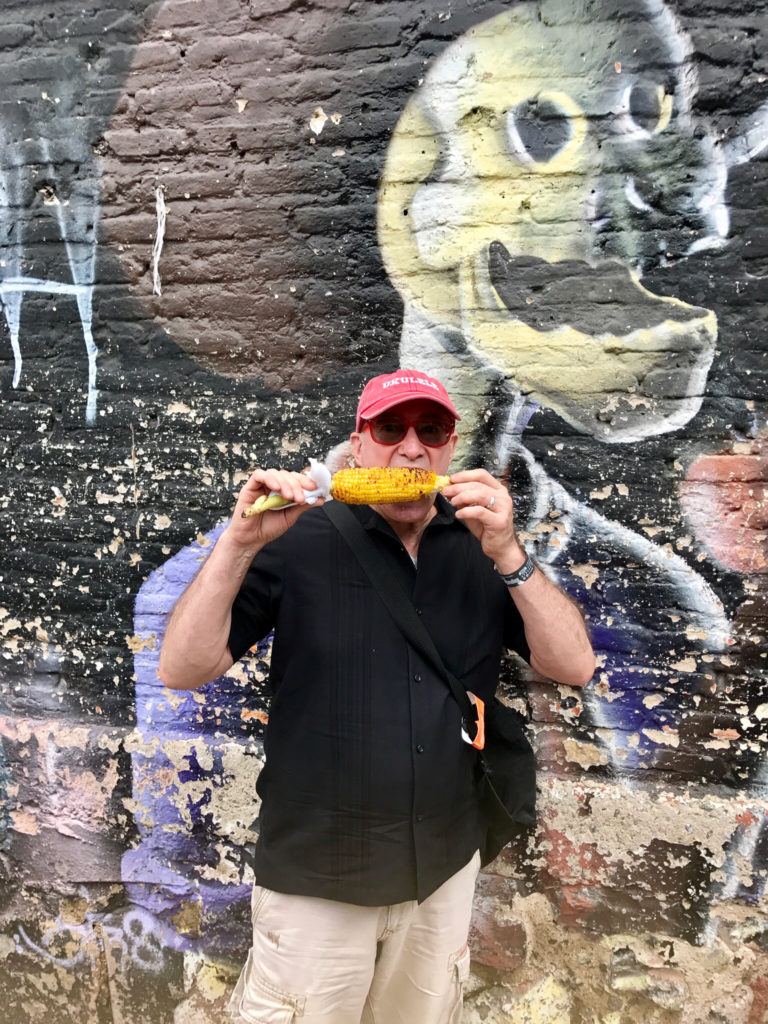
David was enchanted by Tlaquepaque so we returned for a second pass and dinner.
Casa Luna restaurant and gallery is housed in one of the old originals casonas of the old town. The restaurant is set of what it would had been the old internal patio of the home, anchored by 4 wood sculpted tree, each one decorated with different light accents and an open retractable roof, which automatically closed during a quick passing down poured.
The food can be described as Nuevo Mexican . We ordered appetizers of avocado and tuna tower and roasted panela cheeses and tomatoes, both dish excellent oh yes great margaritas.
David order a Sabana a thin well season steak topped with a salad of arugula, shaved Parmesan and pearl drop cherries tomatoes…….I was really excited about my seafood pasta dish made with cream huitlacoche or corn fungus, the sauce was smooth and subtle the disappointment came when the pasta turnout over cooked, but the fresh and warm bolillos were perfect for sucking up all that delicious sauce.
All the while serenaded by a trio of Cuban Musicians, their lead come over to our table to drop a business card, I guess we were applauding louder than anyone and quick cubano to cubano chat followed.
Dinner was finished with cappuccinos and house made miniature fruit paletas.
